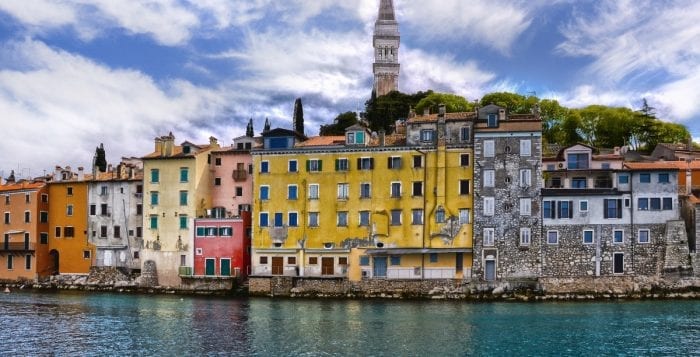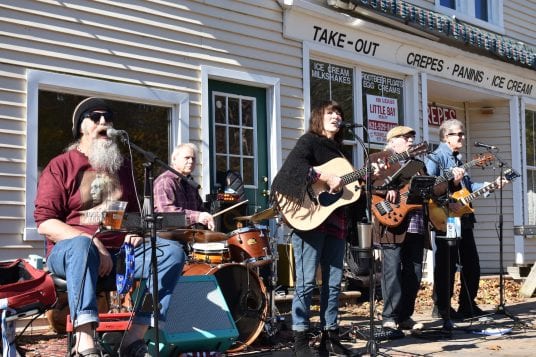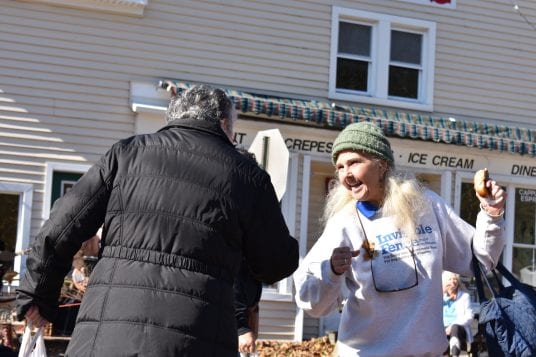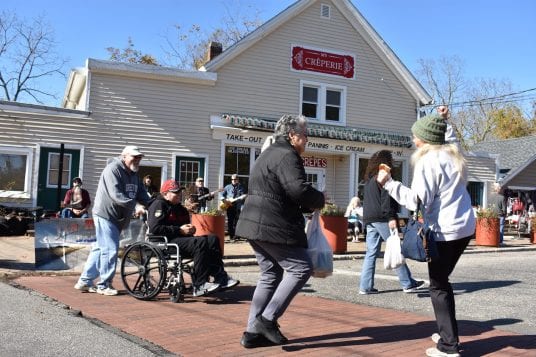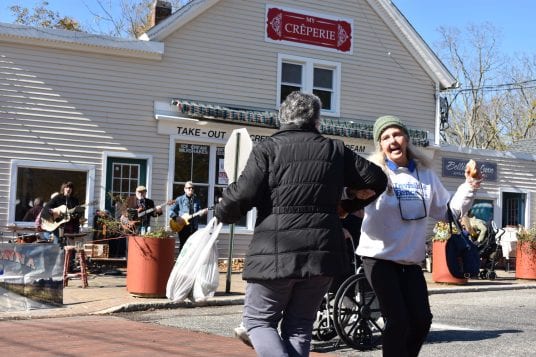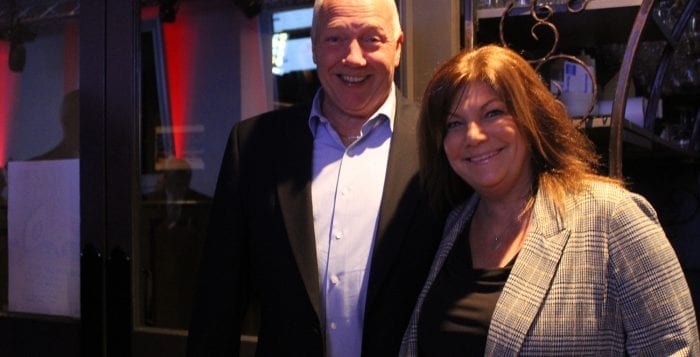Port Jeff and the Business Improvement District are hoping cooperation will equal better results, starting with a new hashtag, #PortJeffersonMeansBusiness.
The Village of Port Jefferson, in partnership with the BID, released a new video at the end of October looking to entice more people to come and shop in village businesses. The video includes interviews with Mayor Margot Garant, along with business owners such as Debra Bowling from Pasta Pasta, Joey Zee from Z Pita restaurant and Jena Turner from Breathe, located on East Main Street.
The video was produced by parking and mobility administrator, Kevin Wood, through his media company FPS Inc. Originally created as part of a rebranding campaign for the village, it has become a step toward a tighter working relationship between the village and BID, which for years has not exactly seen eye to eye.
Previous BID president, Tom Schafer, the owner of Harbor Grill and Tommy’s Place in Port Jeff, stepped down after a divisive mayoral race earlier this year. Schafer had strongly endorsed Garant’s opponent, John Jay LaValle, in the past election.
Since he has stepped down, Roger Rutherford, manager of the staple candy store Roger’s Frigate has stepped into the role of interim president. While he said he wasn’t able to speak on the topic of the BID, he directed questions to James Luciano, the owner of the PJ Lobster House. At the time of reporting, members were expecting him to be voted onto the improvement district’s board of directors Nov. 5.
The incoming board member said with a change of leadership, bringing new blood onto the BID’s board has been necessary going forward.
“We’re in it to revive the community, we just need everyone to participate.”
– James Luciano
The 36-year old has owned the PJ Lobster House since he was 23 and said the BID’s board had previously been reluctant to go for new ideas.
That, he said, is changing. One new concept is a grant system, where businesses can ask for matching funds up to $1,000 for small projects, whether it’s a sign that needs fixing or a new door. The village has agreed to waive the permit and application fee when it comes to these small projects.
The BID is looking toward future advertisements, including television commercials, railroad ads and joint ads with businesses in Connecticut. They are working with Dix Hills-based Ed Moore Advertising. Luciano said more focus is on social media, working with Mount Sinai-based social media agency Social Butterfly. Instead of using its own online pages for social media content, the BID plans to go through the already active Port Jefferson accounts.
The owner of the PJ Lobster House said the BID is planning on a new initiative to allow businesses to be put on a list for social media advertising with no extra expense to them, with two posts a week and boosts paid for by the BID.
In November last year, the BID and village partnered with Qwik Ride, a company that uses electric vehicles that both residents and visitors can use for transport within the village. The service was free thanks to a sponsorship between the BID and Qwik Ride, though some residents were critical of its low ridership numbers and some residents’ difficulty calling one of its cars. Luciano said at a recent BID meeting, the group met with the CEO of Qwik Ride to air their complaints about how the program was being administered, with some vehicles moving out beyond the village and ignoring requests to put more vehicles on the road during events. The BID offered to pay extra money on a shift to keep the transportation company within the area, but they could not reach an agreement.
Garant agreed the service was not working for what the village required: A quick, efficient transport staying within the zip code.
In the past, the mayor has criticized the BID for sitting on its funds. The current budget for the improvement district sits at around $190,000, according to officials, and it receives $68,000 every year from the businesses within the district. The current advertising campaign is earmarked for $75,000. With the planned $20,000 grant program, the budget will sit on an approximated $90,000 surplus. The mayor said around $30,000 of that budget is set aside for Port Jeff in case of heavy snowfalls, but in recent years the village has not dipped into those funds.
The village has yet to give the improvement district its $68,000 for this year, with trustees saying they wished to see more movement on projects.
“The board of trustees wanted to see more initiatives going forward,” the mayor said. “When it comes to municipal funds, it’s move it or lose it.”









